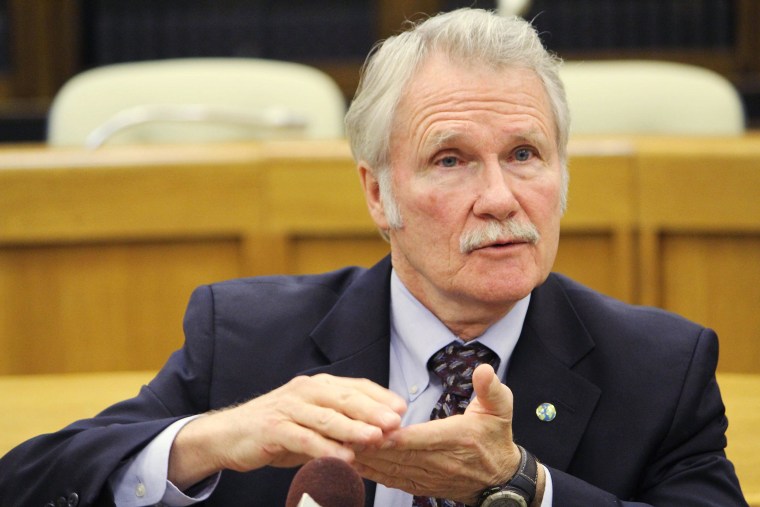When Oregon Gov. John Kitzhaber jumped out of a car to perform CPR on a woman collapsed on the street Monday, he was offering a powerful model of what any ordinary person should do, doctors say.
Willingness to do bystander CPR — cardiopulmonary resuscitation — varies wildly in the U.S., from a low of about 10 percent to a high of about 65 percent of cases, experts say. Depending on where you live, another person’s effort can double or triple the chance of survival, said Dr. Michael Sayre, an emergency medicine physician and spokesman for the American Heart Association.
“It was great,” Sayre said of Kitzhaber’s effort. “It does show that willingness to act is key.”
Sure, Kitzhaber is a former emergency doctor who has intervened in several public crises, but Sayre said specialized medical training is not necessary to initiate life-saving CPR. All you need is a pair of hands and the courage to step up.
“Even if you’re not up to date, you can still make a difference,” Sayre said. “If the person’s not in cardiac arrest, they’re going to wake up and tell you to stop. And if they are in cardiac arrest, you’re going to be pumping some blood around and making a difference.”
Each year in the US, there are some 360,000 out-of-hospital cardiac arrests, which account for 15 percent of all deaths. On average, bystanders jump in to act in only about a quarter of those cases, Sayre and his colleagues reported in a recent study.
CPR is easy to learn and perform, experts say. It depends on checking a patient's airway and performing chest compressions with hands in the center of the chest, hard and fast at a rate of at least 100 pushes per minute.
Kitzhaber was riding in a car on a Portland highway about 5:15 p.m. Monday when noticed a man trying to give CPR to a woman near the roadway, spokeswoman Nkenge Harmon Johnson told NBC News.
“He directed his security detail to pull over. Then he got out with the first aid and medical kit that was in the vehicle,” Harmon Johnson said. “The governor told me that he assessed the woman’s situation. She was in severe distress. He secured her airway and began CPR.”
At the same time, Kitzhaber directed his staff to call paramedics, who arrived shortly after and took over. The woman, who has not been identified, was taken to a local hospital where she was reportedly recovering, Harmon Johnson said.
“She has not contacted the governor. That is not expected,” she added. “He is glad that he could help her and wishes her well.”
